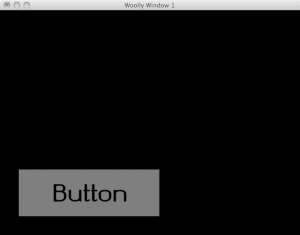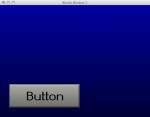At the TC Lispers meeting tonight, I will be giving a little presentation about weblocks. Here are slides for that presentation.
ps. if you’re in range, come to the meeting… Common Roots Cafe in Minneapolis.
At the TC Lispers meeting tonight, I will be giving a little presentation about weblocks. Here are slides for that presentation.
ps. if you’re in range, come to the meeting… Common Roots Cafe in Minneapolis.
On Monday, I am giving a lightning talk at the TC Lispers meeting about my Common Lisp Growl client library.
Here are the slides with presenter notes and the accompanying sample code.
Cross-posted from TCLispers.org:
Robert Goldman, Paul Krueger, and Patrick Stein gave short presentations on different approaches to Graphical User Interfaces with Common Lisp.
In preparation for the upcoming TC Lispers meeting, I was testing my Sheeple-based CL-OpenGL GUI code on all of the different systems that I use. This was important because part of my goal in starting from bare-bones OpenGL was to make something that was pretty easy to port. The OpenGL libraries are the only non-Lisp dependencies, and they are pretty standard.
I run Mac OS X 10.6.2 as my primary development machine. I knew everything I had so far worked there under SBCL 1.0.30 and CMU-CL 20a. It took a little tweaking to get Sheeple built under Allegro CL 8.1 (Trial Edition), but after that I was five-by-five under Allegro, too. Unfortunately, I cannot get CL-OpenGL to run under Clozure 1.3-r11936 on Mac OS X. Also, ECL 9.10.2 doesn’t support weak key hashtables which Sheeple needs. And, my install of clisp broke somewhere along the lines, so I haven’t tried it.
I have an Ubuntu Linux box. There, I am using SBCL 1.0.11.debian (eeps). Everything ran perfectly over there (even displaying through X Windows back to my Mac).
I also run Windows Vista under VMWare Fusion on my Mac. I hadn’t done any development on it for months and months. Fortunately, in Google-ing to find out how to fix it, I stumbled upon what I had written about how I got things set up originally. Over the last two hours, I got SBCL upgraded to 1.0.29 under Vista. I got ASDF-Install set up with a bunch of help from this article. And, from there, I got CFFI and cl-opengl and ZPB-TTF and Sheeple installed.
ZPB-TTF and Sheeple both used some tar format options that archive_0.7.0 didn’t like. For those, I had to jump through some hoops to untar and retar them to get them to install.
Here was my final /Users/Patrick/.sbclrc file:
The list of packages in the middle were about half installed manually to get the archive extraction code working and half installed through ASDF-Install. If I recall correctly, I had to manually install: archive_0.7.0, flexi-streams-1.0.7, gzip-stream_0.2.8, salza2-2.0.7, trivial-gray-streams-2008-11-02, and a fresh copy of asdf-install. I also had to download a compiled version of freeglut.dll and tuck it into my Windows\system32 directory.
Getting SBCL to use the fresh copy of asdf-install was annoying. I ended up starting up a Command Prompt as Administrator (right click on the “command.exe” icon or menu-item and select “Run as Administrator”). Then, I went to the SBCL directory (“C:\Program Files\Steel Bank Common Lisp\1.0.29\”) and did the following:
I had extracted the tar-ball from the ASDF-Install distribution into my ASDF-Systems directory.
Then, I went back and made my GUI code use double-buffered OpenGL windows because running Lisp to OpenGL to Windows Vista to VMWare to Quartz had some wicked flickering going on.
Two hours is a long time for something that’s supposed to be easily portable
. But, I would have spent at least 95% of that time even if I were using an all-Lisp solution. And, this is far less time than I ever spent porting anything else to Windows.
Inspired by the previous TC Lispers meeting and spurred on by the probable topic of the next TC Lispers meeting, I have spent the little bit of coding time I’ve had over the past two weeks on making a GUI layer using Sheeple atop CL-OpenGL and employing ZPB-TTF for font-loading.
I have dubbed this project Woolly
(because it’s made from Sheeple and because Woolly
sounds sorta like GUI
).
 I spent about half of my coding time so far getting the basic framework in place (proven through clickable buttons with labels). I am trying to keep it cleanly separated between generic GUI stuff and the CL-OpenGL specifics in the event that someone would like to port it to some other I/O spec.
I spent about half of my coding time so far getting the basic framework in place (proven through clickable buttons with labels). I am trying to keep it cleanly separated between generic GUI stuff and the CL-OpenGL specifics in the event that someone would like to port it to some other I/O spec.
The other half of my coding time was spent getting the font-rendering to be anti-aliased. I promise to write more about how I accomplished the font-rendering in a future post so that if you’re ever stuck rendering fonts in OpenGL, you won’t be stuck with pixelated blockiness or resorting to rendering to a texture-map and letting the mipmapper figure it out.
For this post, however, I’ll just show you the code that sets up the interface depicted here.
Next up on my agenda is to make the background and button prettier. It should be easy enough to do with GL_LIGHTING and some vertex-coloring for gradations. After that, it’s on to more controls like labels, panels, checkboxes, drop-downs, borders, and (my dread) text input boxes. Then, it’s on to a layout manager.
 Edit: Here’s the same GUI a day later. I’m using a simple lighting scheme and rendering the button in 3D. I haven’t yet hooked in the bit to render it depressed when the button is pressed. I’ve tested the code that draws it the other way, but I haven’t hooked it into the mouse handlers yet.
Edit: Here’s the same GUI a day later. I’m using a simple lighting scheme and rendering the button in 3D. I haven’t yet hooked in the bit to render it depressed when the button is pressed. I’ve tested the code that draws it the other way, but I haven’t hooked it into the mouse handlers yet.
Edit #2: Actually, it only took a few minutes for me to hook in the rendering it pressed vs. unpressed. When I did it though, it looked like the label was sliding around because the effect of the contrast between the light and dark edges of the button was so great that you perceive the whole button sliding when it’s pressed. So, I added a little bit in there to actually slide the text by an amount close to what is perceived. So, now… it looks pretty spiffy.